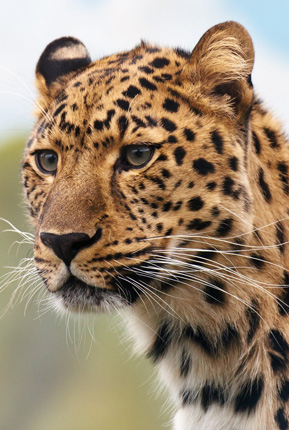
All Animals

The Leopard: Elusive and Elegant Apex Predator
The leopard, a member of the big cat family, is renowned for its elusive nature, striking appearance, and remarkable adaptability. As one of the most widespread and versatile predators in Africa and parts of Asia, the leopard embodies grace, stealth, and power. Its ability to thrive in diverse habitats and its role as a top predator make it a fascinating subject of study and admiration.
Leopards are distinguished by their distinctive coat, which features a pattern of rosettes and spots that provide excellent camouflage in their natural habitats. Adult leopards typically weigh between 66 to 176 pounds (30 to 80 kilograms) and measure about 4.25 to 6.25 feet (1.3 to 1.9 meters) in body length, not including their tails. Their powerful bodies are equipped with muscular limbs, sharp claws, and a strong jaw, enabling them to be effective hunters and climbers.
Leopards are highly adaptable and can be found in a range of habitats, including savannas, grasslands, rainforests, and mountainous regions. Their ability to adjust to different environments is a testament to their versatility and resilience. Leopards are distributed across sub-Saharan Africa, parts of North Africa, and across South and Southeast Asia, where they inhabit areas from the dense forests of the Western Ghats in India to the savannas of Kenya.
As solitary hunters, leopards rely on their exceptional stealth and agility to stalk and ambush prey. They primarily hunt at night, using their acute senses of sight and hearing to locate prey. Leopards are opportunistic feeders with a diet that includes a wide variety of animals such as antelopes, deer, birds, and small mammals. Their ability to drag prey up into trees helps them avoid scavengers and other predators, ensuring that their kills are protected and preserved.
Leopards are known for their elusive behavior, often avoiding human contact and remaining hidden in dense vegetation. This secretive nature has contributed to their reputation as one of the most enigmatic big cats. Despite their elusive demeanor, leopards are known to be highly territorial, with males and females establishing and defending their own territories. They communicate through vocalizations, scent marking, and visual signals to convey their presence and boundaries.
Breeding occurs year-round, with females giving birth to litters of two to four cubs after a gestation period of about 90 to 105 days. The cubs are born blind and rely entirely on their mother for protection and nourishment. As they grow, they learn essential survival skills from their mother, including hunting and climbing. The cubs remain with their mother for about 1.5 to 2 years before dispersing to establish their own territories.
Leopards face several threats that impact their populations. Habitat loss due to deforestation, agricultural expansion, and human encroachment reduces their available living space and prey resources. Human-wildlife conflict, often arising from livestock predation, can lead to retaliatory killings. Additionally, leopards are sometimes targeted by poachers for their beautiful pelts and body parts, contributing to their decline.
Conservation efforts for leopards focus on habitat preservation, anti-poaching measures, and human-wildlife conflict mitigation. Protecting and restoring their natural habitats, promoting coexistence between leopards and local communities, and enforcing anti-poaching laws are essential for the conservation of these elusive cats. Education and awareness programs also play a crucial role in fostering a positive attitude toward leopards and their conservation.
Leopards have a significant presence in cultural and symbolic contexts, often representing qualities such as agility, strength, and mystery. Their depiction in art, literature, and folklore underscores their importance and the fascination they inspire.
In summary, the leopard, with its elusive nature, striking appearance, and adaptability, is a remarkable apex predator. Protecting leopards and their habitats is vital for maintaining the health and balance of the ecosystems they inhabit. By supporting conservation efforts and fostering a deeper appreciation for leopards, we contribute to the preservation of these majestic creatures and the natural world they represent.
